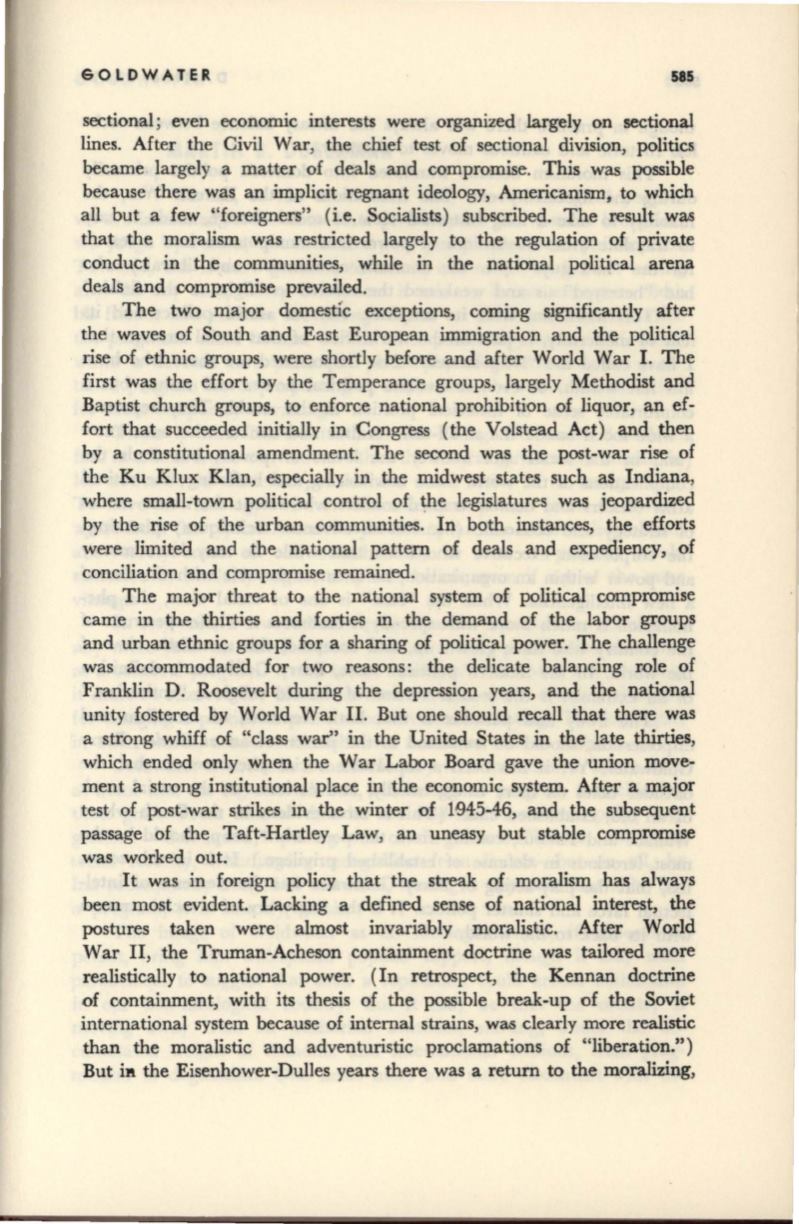

GOLDWATER
585
sectional; even economic interests were organized largely on sectional
lines. After the Civil War, the chief test of sectional division, politics
became largely a matter of deals and compromise. This was possible
because there was an implicit regnant ideology, Americanism, to which
all but a few "foreigners" (i.e. Socialists) subscribed. The result was
that the moralism was restricted largely to the regulation of private
conduct in the communities, while in the national political arena
deals and compromise prevailed.
The two major domestic exceptions, coming significantly after
the waves of South and East European immigration and the political
rise of ethnic groups, were shortly before and after World War I. The
first was the effort by the Temperance groups, largely Methodist and
Baptist church groups, to enforce national prohibition of liquor, an ef–
fort that succeeded initially in Congress (the Volstead Act) and then
by a constitutional amendment. The second was the post-war rise of
the Ku Klux Klan, especially in the midwest states such as Indiana,
where small-town political control of
~he
legislatures was jeopardized
by the rise of the urban communities. In both instances, the efforts
were limited and the national pattern of deals and expediency, of
conciliation and compromise remained.
The major threat to the national system of political compromise
came in the thirties and forties in the demand of the labor groups
and urban ethnic groups for a sharing of political power. The challenge
was accommodated for two reasons: the delicate balancing role of
Franklin D. Roosevelt during the depression years, and the national
unity fostered by World War II. But one should recall that there was
a strong whiff of "class war" in the United States in the late thirties,
which ended only when the War Labor Board gave the union move–
ment a strong institutional place in the economic system. After a major
test of post-war strikes in the winter of 1945-46, and the subsequent
passage of the Taft-Hartley Law, an uneasy but stable compromise
was worked out.
It was in foreign policy that the streak of moralism has always
been most evident. Lacking a defined sense of national interest, the
postures taken were almost invariably moralistic. After Wodd
War II, the Truman-Acheson containment doctrine was tailored more
realistically to national power. (In retrospect, the Kennan doctrine
of containment, with its thesis of the possible break-up of the Soviet
international system because of internal strains, was clearly more realistic
than the moralistic and adventuristic proclamations of "liberation.")
But ift the Eisenhower-Dulles years there was a return to the moralizing,









